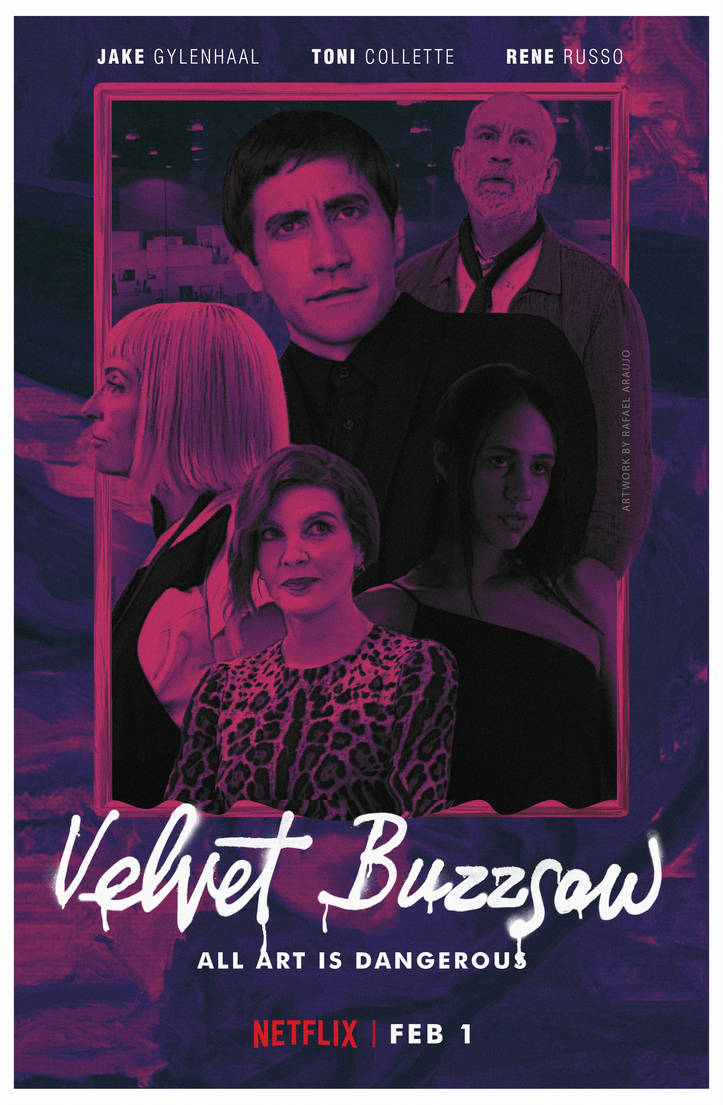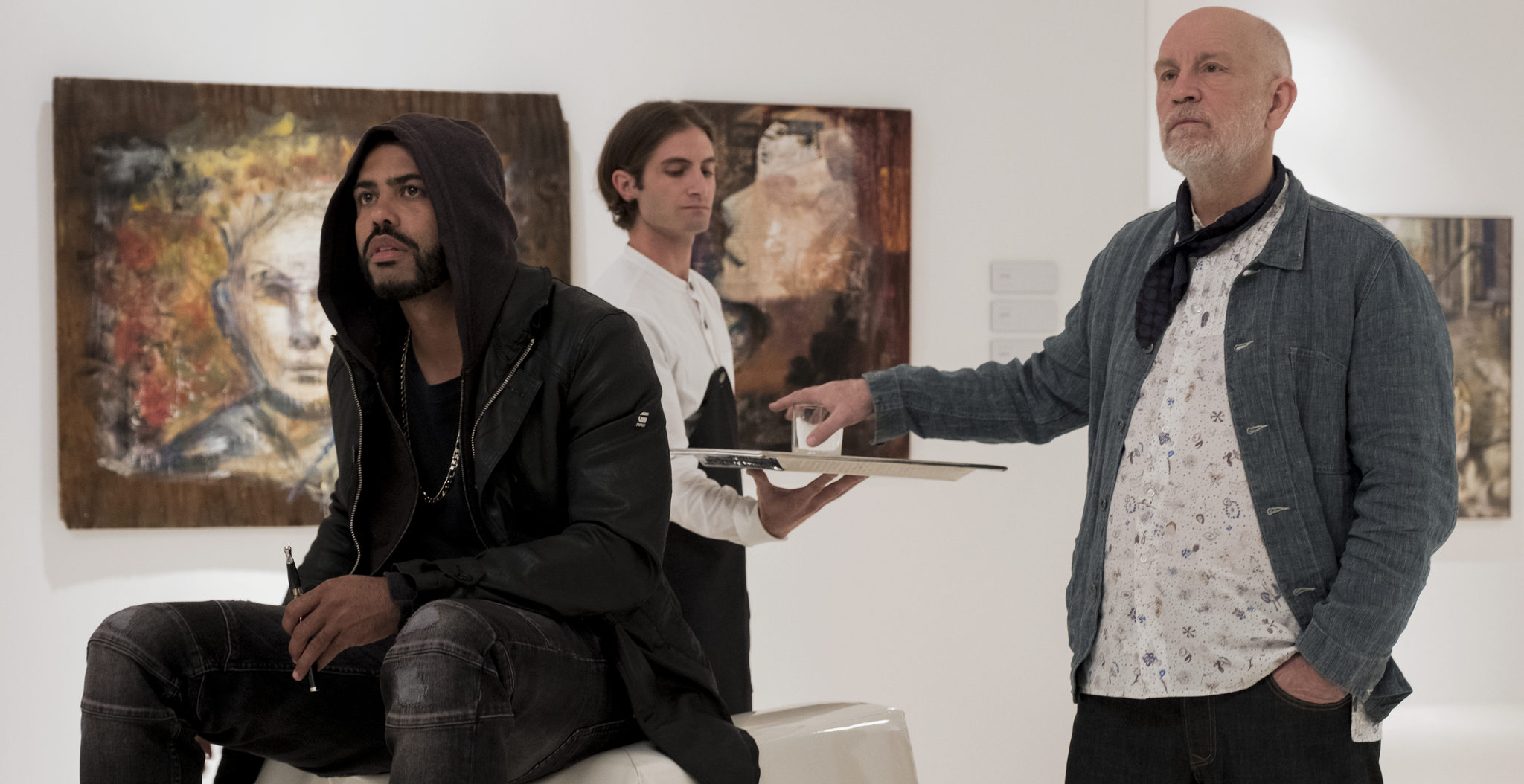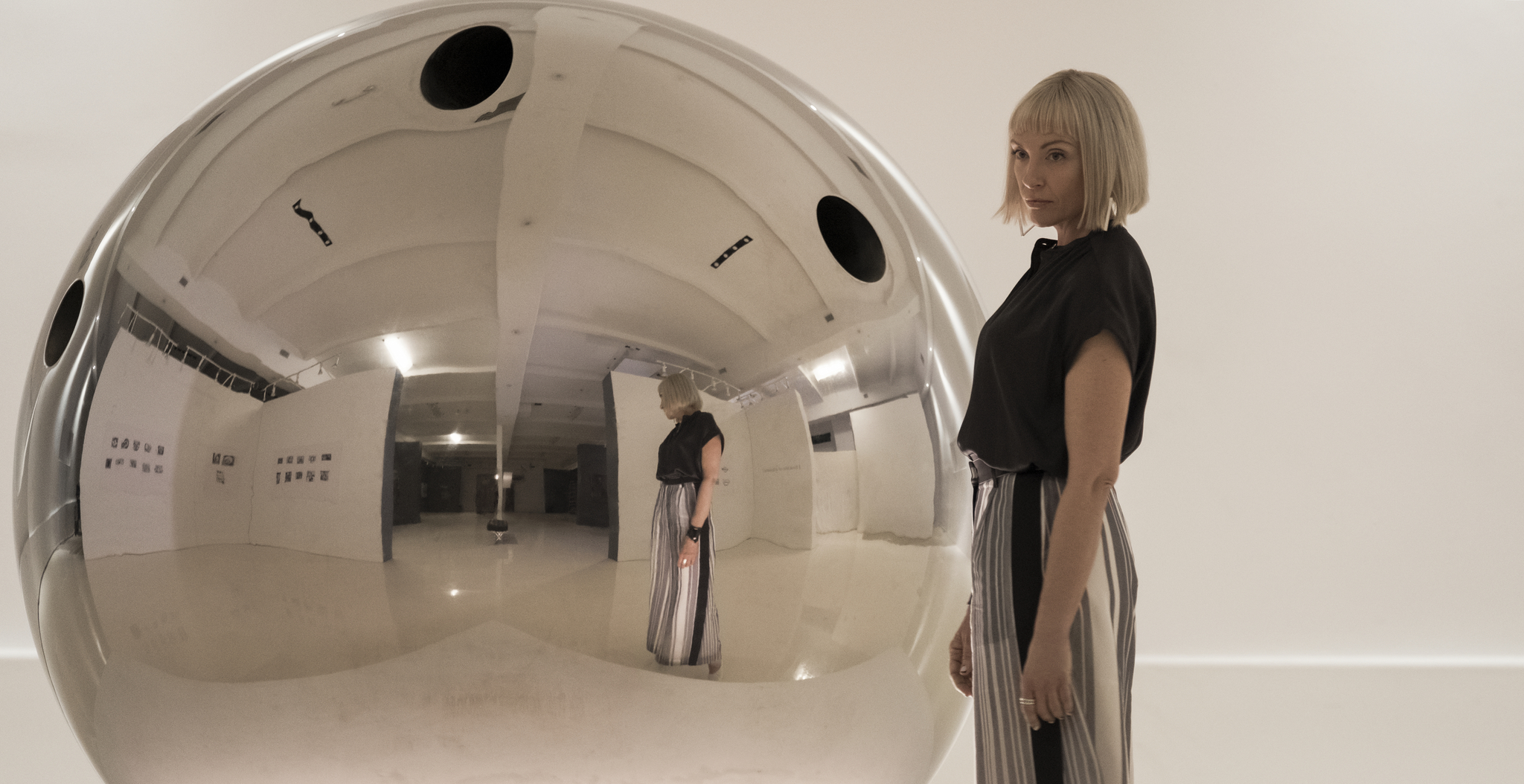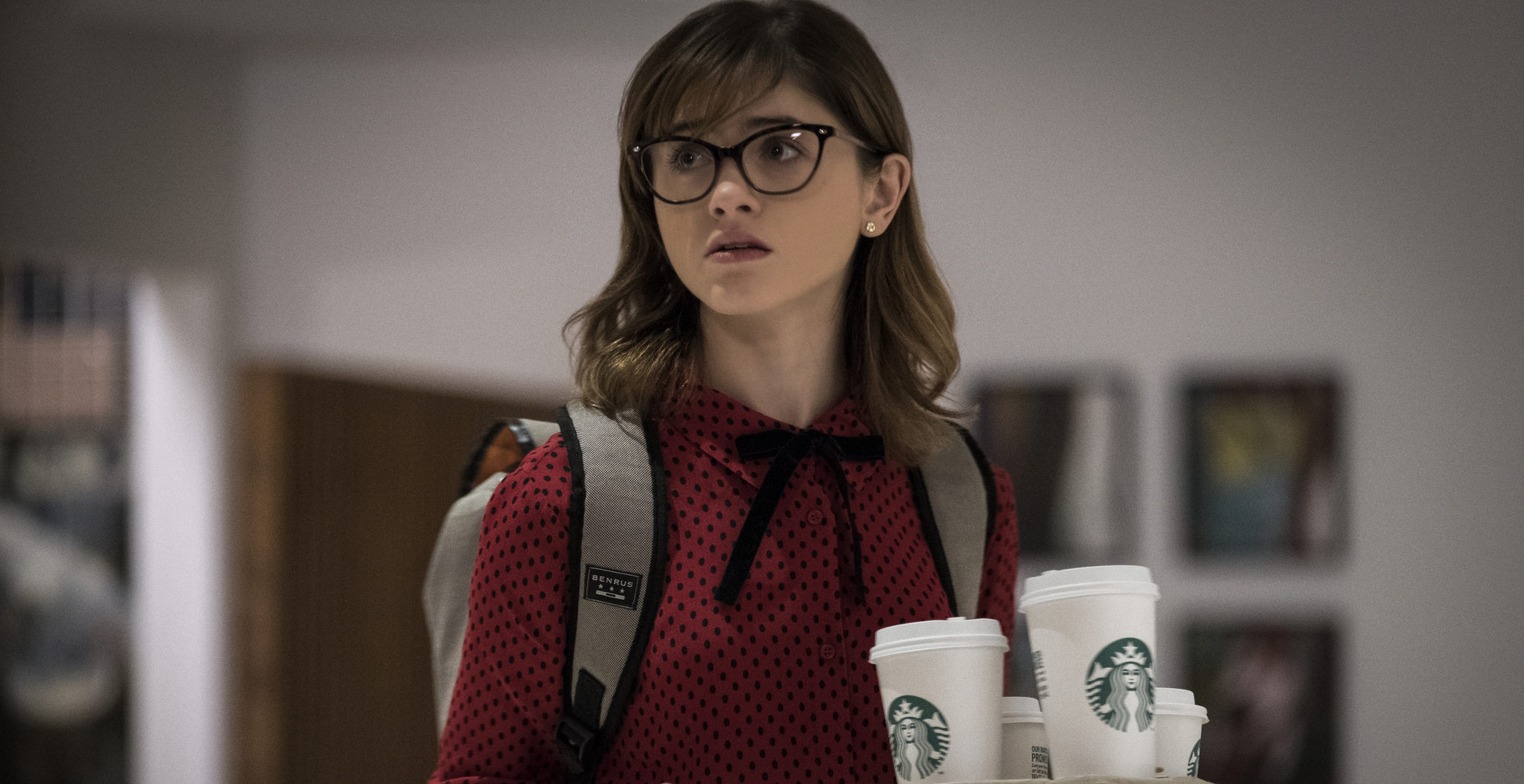

“A bad review is better than sinking into the great glut of anonymity.”
It’s unfortunate that Dan Gilroy has yet to replicate the success of Nightcrawler. It isn’t even a case of unfulfilled promise—that debut was better than most career highs. But two films later and Gilroy is floundering, unable to match, let alone top, his first film. Velvet Buzzsaw is a return to the thematic territory of Nightcrawler, and even utilizes two of the same primary cast members, but the weird amalgamation of social critique, satire, and slasher flick never really coheres into anything worthwhile. In Nightcrawler, Gilroy shined a spotlight on our society’s unhealthy consumption levels of sensationalist news. Using a similar avenue for exploration—Jake Gyllenhaal as a madman—Gilroy turns his eye toward the contemporary art world, where nearly everything is pretension and posture. Due to a smattering of issues that add up over the film’s runtime, it left a bad taste in my mouth, and while I enjoyed some aspects of it, I don’t think all that much of it.
Let’s start with the good. The cast is mostly excellent. Jake Gyllenhaal leads the ensemble cast as Morf Vandewalt, an influential L.A. tastemaker who can look at a giant blob of stainless steel or a mechatronic mannequin and inform us whether it is a work of genius or simply smut. Rene Russo, who starred alongside Gyllenhaal in Nightcrawler, plays Rhodora Haze, the owner of a famous art gallery and a former punk rocker. It is her character, who has forsaken her free-spirited roots, that personifies the cynical nature of the modern art market. Other principal players are Gretchen (Toni Collette), a curator, Josephina (Zawe Ashton), Rhodora’s understudy, Jon Dondon (Tom Sturridge), a rival gallery owner, and Coco (Natalia Dyer), a gallery assistant who discovers the dead bodies of nearly every other character in the film. The always welcome John Malkovich appears as a washed up artist named Piers who languidly shoots basketball in his studio now that sobriety has robbed him of his spark, while David Diggs portrays up and coming street artist Damrish.

It is toward these false characters—the controllers of the art market—that Gilroy directs his scorn. Basically every character except the artists themselves (and possibly the as yet uncorrupted Coco) are in it for social status and money rather than the art itself. Eventually, things turn strange when a supernatural element is introduced, but first, Gilroy takes his time to really make you deplore these characters. For instance, after Dondon poaches Piers from Rhodora, he visits the artist’s downtown studio to check out the new projects he’s been working on. After a minor gaffe as soon as he walks in the front door, Dondon mistakenly fawns over what he deems a visionary, groundbreaking piece of work—a bag of trash; Piers must point out that the bag of trash is, in fact, a bag of trash. This kind of pretentiousness is baked into most of these characters and the cast does an excellent job of emphasizing it (whether or not that is a good for the overall enjoyment of the film is up for debate).
When Josephina finds the corpse of her elderly upstairs neighbor slumped in the stairwell, she snoops around his apartment and discovers hundreds of paintings. She shows some of them to Morf, who immediately recognizes them as works of genius. Overnight, Vetril Dease, a dead man, becomes the hottest new artist on the scene. The catch is that Dease, a tortured man who suffered an abusive childhood and psychiatric experimentation, cast a spell on his paintings. As a lab technician named Gita (Nitya Vidyasagar) later confirms to Morf, the darker strokes of color in Dease’s paintings were made with blood. The supernatural rules are not delineated, at all, so we kind of have to go with the flow—but Dease’s paintings begin wreaking havoc in the lives of those who would profit from them. First to go is Bryson (Billy Magnussen), a maintenance man at Rhodora’s gallery who has been tasked with discreetly placing boxes of Dease’s works in storage to create an artificial scarcity and drive up prices. On the way, a cigarette ash catches his clothing on fire and he wrecks his pickup into an abandoned gas station. He flounders into the bathroom, where he splashes cold water on his wounds. Above the sink, a painting of monkeys dressed up like mechanics comes to life; their arms reach out of the painting and pull Bryson into it.

A series of similarly grisly deaths follow, with the survivors only gradually making the connection to Dease’s works. Inside of an art installation, a disembodied hand reaches down from the rafters and hangs Dondon by his scarf. Coco finds him the next morning. The night before Dease’s works will premiere at an exhibit, Gretchen does a final walkthrough of the gallery. Approaching a piece called Sphere, a large shiny ball of metal which creates a singular sensation when one places their hand into one of its many dark holes, she tentatively places her hand inside. The machine malfunctions and severs her arm at the shoulder, leaving her to bleed out. The next morning, untold visitors observe the piece, assuming that the corpse and blood puddles are part of the work. It isn’t until Coco arrives and finds a group of school children splashing around in Gretchen’s blood that the alarm is raised.
More people die in a variety of creative ways, and unfortunately, that’s the sole purpose of the latter portion of Velvet Buzzsaw. Whether intentional or not, Gilroy does a splendid job of making these character deaths satisfying because his characters are so shallow. Their dialogue is pompous and performative, which probably hews fairly close to the empty words of the real life versions of these characters, but it’s just intolerable to sit through for someone not of that world (maybe it’s intolerable to people in that world too, but it’s their career field so they put up with it). There’s a goofy love quadrangle going on that furthers this sense of false connectedness. Morf, Josephina, Ed (Sedale Threatt Jr.), and Damrish all make mercenary romantic advances, only to drop the relationships at the first sign that they have become less professionally advantageous than they’d hoped. There are attempts at romantic drama, but because these characters are so shallow, they ring hollow. It’s just impossible to bring yourself to care about them at all because you know they don’t really care about each other.

Velvet Buzzsaw is simply too confused to succeed. The point Gilroy seems to be making is that those who profit from art deserve to die. But, like, dude, you are profiting from this movie. Many of the world’s most famous artworks were commissioned. Da Vinci, Picasso, Michelangelo—all accepted money in exchange for their work. In modern times, an idea has taken hold that art should be completely separated from any financial incentive; that this separation somehow makes it pure. While this idealism has a certain appeal—and has given birth to some fantastic homespun creations in a variety of mediums—it’s undeniably at odds with the historical commodification of art. Artistic endeavors were done on commission, funded by schools and wealthy patrons because the means for creating art were not cheap. Heck, even some books of the New Testament were commissioned—and billions of people believe they’re the inspired Word of God. So don’t tell me you can’t make art for money or that doing so somehow makes it less than inspired. It’s an incorrect proposition, and the rest of the film is too heavily reliant on despicable characters for it to be much more than another misstep in what began as a promising career.